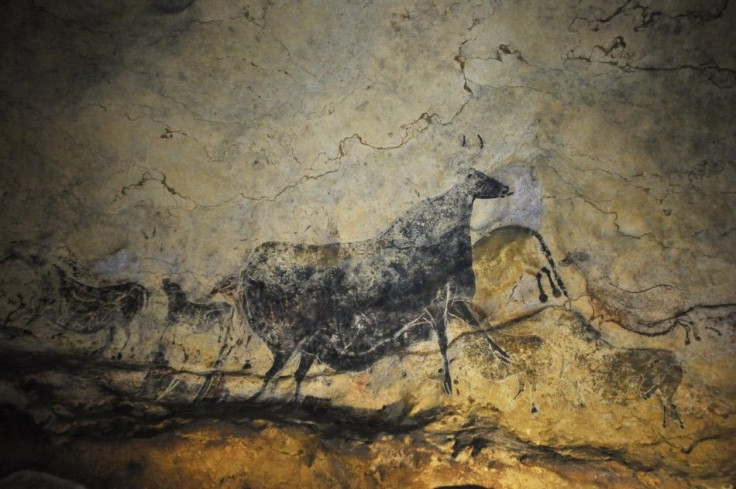Scientists Discover Europe's Oldest Engraved Female Genitalia Art

Scientists have discovered what they believe to be some of the oldest known engravings and artworks, dating back some 37,000 years -- and some of them are possibly pornographic, according to a study published Monday.
A 1.5 metric ton hunk of limestone in southwestern France's Abri Castanet was first discovered in 2007. It contains some early forms of artwork, including what scientists claim are graphic depictions of the female anatomy. The artwork is thought to have been part of a shelter for reindeer hunters.
There is a whole question about how and why, and why here in this place at this particular time you begin to see people spending so much time and energy and imagination on the graphics, New York University Professor and lead author of the paper Randall White told AFP.
The study appears in the latest Proceeding of the National Academy of Sciences.
The images include the expected smattering of horses, but also the back end of a horse and vulvar imagery representing female sex organs.
The engravings stand in contrast to the better-known works in France's Grotte Chauvet, which are done with a greater degree of sophistication.
Unlike the Chauvet paintings and engravings, which are deep underground and away from living areas, the engravings and paintings at Castanet are directly associated with everyday life, given their proximity to tools, fireplaces, bone and antler tool production, and ornament workshops, White said.
The works in Chauvet and Castanet are both believed to be products of the Aurgnacian culture, the first modern humans in Europe that replaced the Neaderthals and lived 40,000 to 28,000 years ago.
They had relatively complex social identities communicated through personal ornamentation, and they practiced sculpture and graphic arts, White said.
The sexy engravings aren't the first to be created by the Aurgnacians, who managed to produce the Venus of Hohle Fels, an ivory figure of a woman with large breasts and a pronounced vulva and labia majora protruding between her legs.
Scientists have yet to decipher what purpose all the vagina art actually served.
University of Pennsylvania archaeologist Harold Dibble refused to speculate.
Who the hell knows, he told Science Magazine when asked about the significance of the vulvas. Maybe it's telling us more about the people making those interpretations.
© Copyright IBTimes 2024. All rights reserved.











